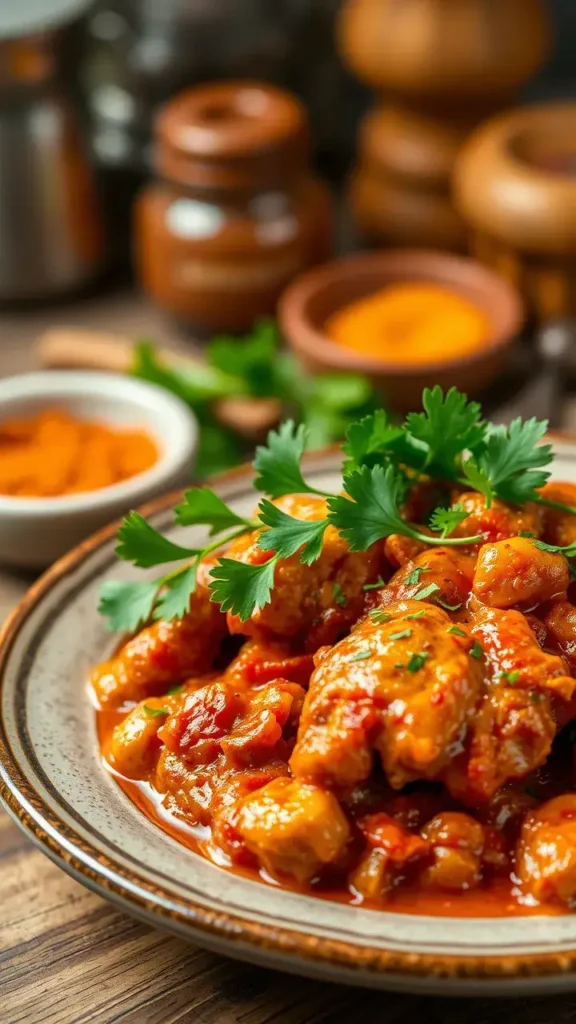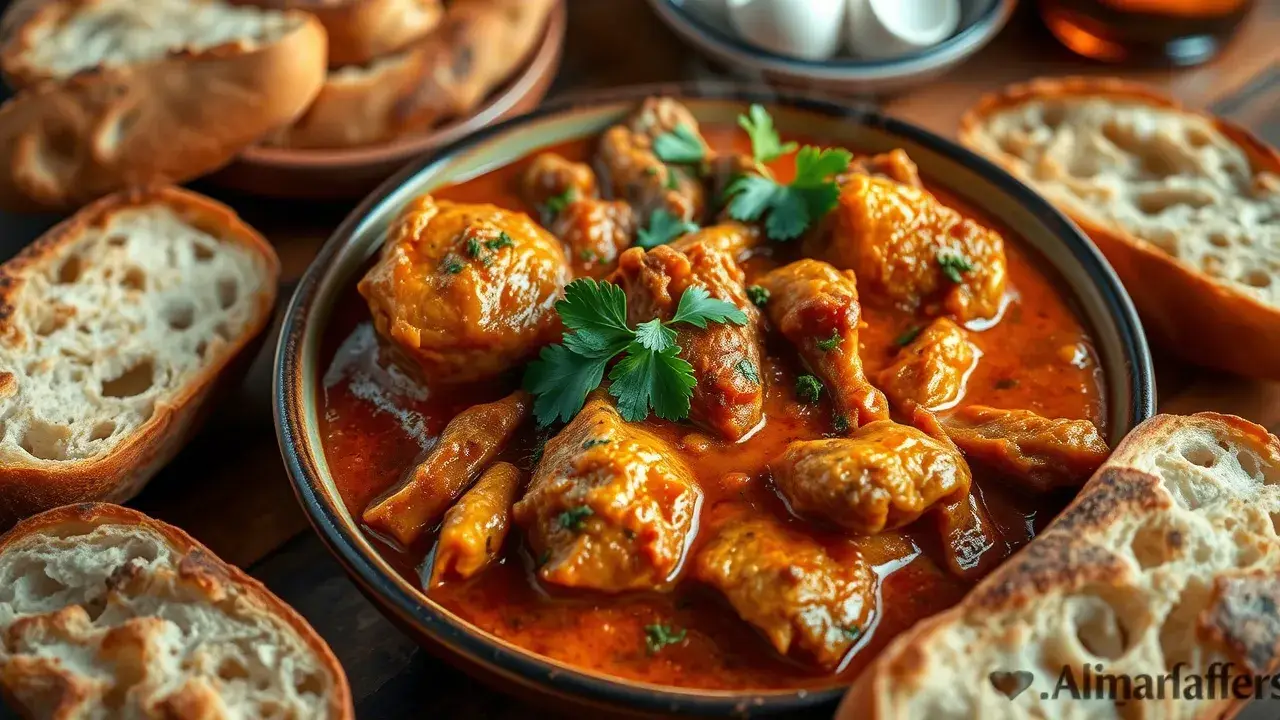Have you ever taken a bite of something that transported you to another place? For me, that was the first time I tasted Moroccan chicken casserole. The warmth of spices, the tenderness of the chicken, and the burst of flavors—it was like a culinary trip to the vibrant markets of Marrakech. This dish isn’t just food; it’s a celebration of culture and tradition.
Moroccan cuisine is famous for its rich flavors and aromatic spices. This chicken casserole, in particular, stands out. It’s not just a meal; it’s an experience. Perfect for those who are looking to eat well while keeping an eye on their health, this recipe is a gem in the world of Slimming Eats.
Ingredients & Substitutions
Core Ingredients
- Chicken Thighs – I prefer thighs for their juiciness. You can use breasts if you want, but thighs are just better.
- Onion – A medium onion, diced. It adds sweetness and depth.
- Garlic – Fresh garlic is a must. You can use powdered if you’re in a pinch, but fresh is always best.
- Carrots – Sliced. They add color and sweetness.
- Bell Peppers – Any color works. They bring crunch and flavor.
- Chickpeas – Canned or dried, these add protein and texture.
- Tomato Paste – For richness. It’s a game changer.
- Chicken Stock – Low-sodium is ideal. It keeps the dish from getting too salty.
- Spices – Cumin, coriander, paprika, cinnamon, and a pinch of cayenne. Each spice plays a role in flavor.
- Olive Oil – For sautéing. It adds a lovely flavor.
- Fresh Parsley or Cilantro – For garnish. A dash of freshness goes a long way.
Substitutions
- Chicken: If you’re vegetarian, use tofu or more chickpeas.
- Spices: If you don’t have all the spices, curry powder can work in a pinch.
- Chickpeas: Lentils can be a good alternative if you’re looking for something different.
When picking ingredients, always go for fresh when you can. Fresh herbs and spices elevate the dish. Dried is fine but remember, fresh has a vibrancy that dried just can’t match.

Step-by-Step Instructions
Preparing the Chicken
Start by heating olive oil in a large casserole dish over medium heat. Brown the chicken thighs skin-side down first. This locks in all those juicy flavors. Be careful not to overcrowd the pan; otherwise, the chicken will steam instead of sear. About 5-7 minutes should do the trick. Flip them over and let them brown for another 5 minutes.
Sautéing the Aromatics
Once the chicken is done, remove it and set it aside. In the same pot, add your diced onion. Cook until translucent, about 3-4 minutes. Then toss in the garlic and sauté for another minute. You want that garlic fragrant but not burnt.
Building the Flavor Base
Now, add the sliced carrots and bell peppers. Cook for about 5 minutes, stirring occasionally. The veggies should be tender but still have a bite to them. Stir in the tomato paste and cook for an additional 2 minutes. This helps to caramelize the paste, enhancing its flavor.
Adding the Spices
Now it’s time for the spices! Add cumin, coriander, paprika, cinnamon, and cayenne. Stir well to coat the veggies. You want the spices to toast a bit; it really brings out their flavors. This is where the magic happens.
Bringing it All Together
Return the chicken to the pot. Pour in the chicken stock and add the chickpeas. Bring everything to a simmer. Cover the pot and let it cook low and slow for about 30-40 minutes. This allows the chicken to become tender and soak in all those wonderful flavors.
Final Touches
Once the chicken is cooked through, taste and adjust seasoning if necessary. A pinch of salt or a squeeze of lemon can really brighten things up. If you want a bit more heat, now’s the time to sprinkle in more cayenne or even some harissa.
Cooking Techniques & Science
Searing the chicken first is crucial. It locks in those juices, giving you a moist and flavorful piece of meat. When you sauté the onions and garlic, you’re not just cooking them; you’re developing the base flavors that will carry throughout the dish.
Using a casserole dish is also important. It allows for even cooking and helps meld the flavors together beautifully. A good heavy-bottomed pot will retain heat well, ensuring that everything cooks evenly.

Serving & Pairing Suggestions
When it’s time to serve, ladle the casserole into bowls. Garnish with fresh parsley or cilantro for that pop of color. A sprinkle of lemon zest can elevate the dish even more.
As for pairings, think about serving it with fluffy couscous or warm pita bread. A side of yogurt with herbs can provide a cooling contrast. For drinks, a light Moroccan mint tea or even a crisp white wine would complement the spices nicely.
Conclusion
This Moroccan chicken casserole isn’t just a recipe; it’s a celebration of flavors and cultures. The combination of spices, chicken, and vegetables creates a dish that’s both comforting and exciting. Remember, the secret is in the technique and the love you put into it.
For those looking to switch it up, consider adding dried fruits like apricots or raisins for a sweet twist. Don’t be afraid to experiment! Cooking is all about creativity.
FAQs
Can I make this casserole in advance?
Absolutely! It reheats beautifully. Just store it in an airtight container in the fridge for up to three days.
Is it freezer-friendly?
Yes! Portion it into freezer-safe containers. It can last up to three months in the freezer.
What if I don’t have all the spices?
You can substitute with curry powder or even a store-bought Moroccan spice blend.
Can I use white meat instead of dark?
Sure! Just keep an eye on the cooking time since white meat cooks faster.
How can I make it spicier?
Add an extra teaspoon of cayenne or throw in some fresh chili peppers during cooking for more heat.








